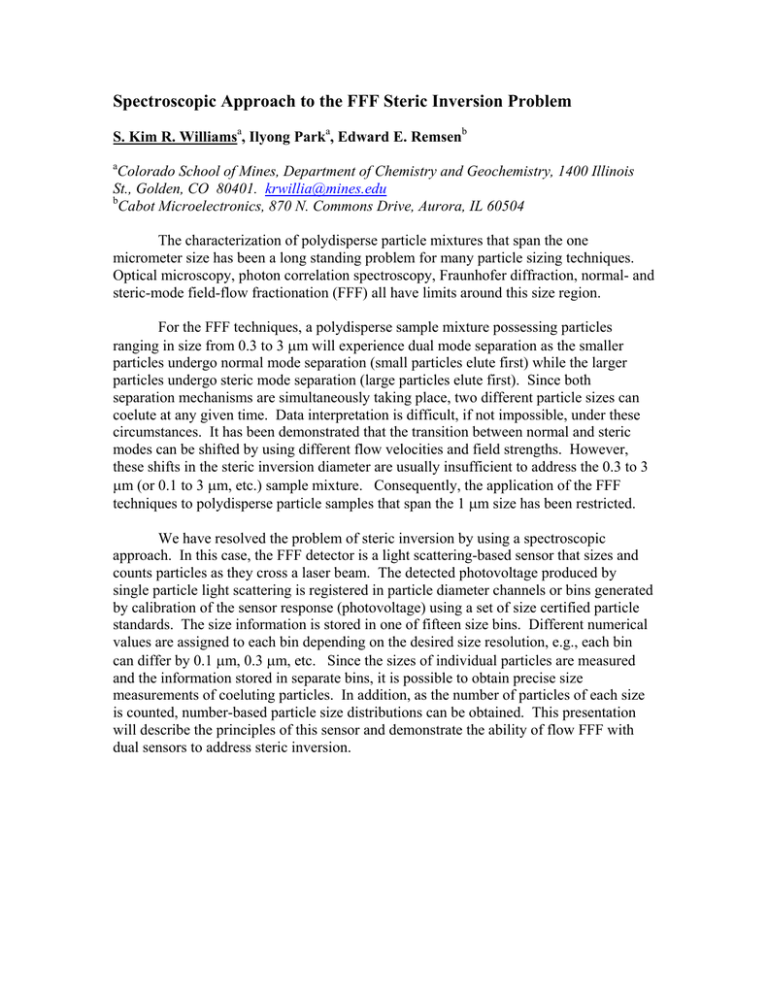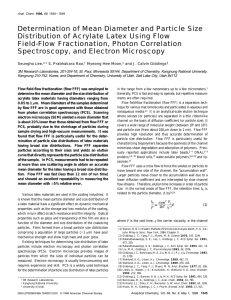Spectroscopic Approach to the FFF Steric Inversion Problem
advertisement

Spectroscopic Approach to the FFF Steric Inversion Problem S. Kim R. Williamsa, Ilyong Parka, Edward E. Remsenb a Colorado School of Mines, Department of Chemistry and Geochemistry, 1400 Illinois St., Golden, CO 80401. krwillia@mines.edu b Cabot Microelectronics, 870 N. Commons Drive, Aurora, IL 60504 The characterization of polydisperse particle mixtures that span the one micrometer size has been a long standing problem for many particle sizing techniques. Optical microscopy, photon correlation spectroscopy, Fraunhofer diffraction, normal- and steric-mode field-flow fractionation (FFF) all have limits around this size region. For the FFF techniques, a polydisperse sample mixture possessing particles ranging in size from 0.3 to 3 μm will experience dual mode separation as the smaller particles undergo normal mode separation (small particles elute first) while the larger particles undergo steric mode separation (large particles elute first). Since both separation mechanisms are simultaneously taking place, two different particle sizes can coelute at any given time. Data interpretation is difficult, if not impossible, under these circumstances. It has been demonstrated that the transition between normal and steric modes can be shifted by using different flow velocities and field strengths. However, these shifts in the steric inversion diameter are usually insufficient to address the 0.3 to 3 μm (or 0.1 to 3 μm, etc.) sample mixture. Consequently, the application of the FFF techniques to polydisperse particle samples that span the 1 μm size has been restricted. We have resolved the problem of steric inversion by using a spectroscopic approach. In this case, the FFF detector is a light scattering-based sensor that sizes and counts particles as they cross a laser beam. The detected photovoltage produced by single particle light scattering is registered in particle diameter channels or bins generated by calibration of the sensor response (photovoltage) using a set of size certified particle standards. The size information is stored in one of fifteen size bins. Different numerical values are assigned to each bin depending on the desired size resolution, e.g., each bin can differ by 0.1 μm, 0.3 μm, etc. Since the sizes of individual particles are measured and the information stored in separate bins, it is possible to obtain precise size measurements of coeluting particles. In addition, as the number of particles of each size is counted, number-based particle size distributions can be obtained. This presentation will describe the principles of this sensor and demonstrate the ability of flow FFF with dual sensors to address steric inversion.





